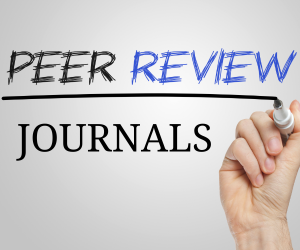A Review Article on Alzheimers disease
Abstract
This is a comprehensive overview of Alzheimer's disease, covering its historical background, pathogenesis, classification, risk factors, global burden, prevention strategies, diagnostic methods, and treatment options. It's clear that Alzheimer's disease is a complex and multifaceted condition that poses significant challenges to healthcare systems worldwide. The distinction between Alzheimer's disease and dementia is particularly important to highlight, as is the ongoing research into disease-modifying treatments. The amyloid cascade hypothesis remains a focal point in understanding the pathogenesis of Alzheimer's, and while current pharmaceutical treatments focus on symptom management, there is hope for future therapies aimed at disease modification.
The projected increase in Alzheimer's prevalence underscores the urgent need for effective preventive strategies and therapeutic interventions. Precision medicine approaches hold promise for tailoring treatments to individual patients based on specific biomarkers and clinical characteristics.
Downloads
References
Colin L. Masters1, R. B. (2015, 15 octuber). Alzheimer disease. Retrieved from
Primer:file:///C:/Users/rohit/AppData/Local/Microsoft/Windows/INetCache/IE/OV6Z2A0Q/Alzheimers_disease
Scheltens P, Blennow K, Breteler MM, et al. Alzheimer’s disease. Lancet 2016; 388: 505–
Philip Scheltens, B. D. (2022, 4 april). alzheimer disease. Retrieved from preview pmc:
https://www.ncbi.nlm.nih.gov/pmc/articles/PMC8354300/
Alzheimer's disease is thought to be caused by the abnormal build-up of proteins in and
around brain cells. (n.d.). Retrieved from NHS: https://www.nhs.uk/conditions/alzheimersdisease/causes/
Mastroeni, D.; Grover, A.; Delvaux, E.; Whiteside, C.; Coleman, P.D.; Rogers, J.
Epigenetic mechanisms in Alzheimer’s disease. Neurobiol. Aging 2011, 32, 1161–1180.
Scheltens, P.; De Strooper, B.; Kivipelto, M.; Holstege, H.; Chételat, G.; Teunissen, C.E.;
Cummings, J.; van der Flier, W.M. Alzheimer’s disease. Lancet 2021, 397, 1577–1590.
Cummings, J.; Lee, G.; Nahed, P.; Kambar, M.E.Z.N.; Zhong, K.; Fonseca, J.; Taghva, K.
Alzheimer’s disease drug development pipeline: 2022. Alzheimer Dement. Transl. Res. Clin.
Interv. 2022, 8, e12295
Nikolac Perkovic, M.; Videtic Paska, A.; Konjevod, M.; Kouter, K.; Svob Strac, D.;
Nedic Erjavec, G.; Pivac, N. Epigenetics of Alzheimer’s Disease. Biomolecules 2021, 11,
Millan, M.J. The epigenetic dimension of Alzheimer’s disease: Causal, consequence, or
curiosity? Dialogues Clin. Neurosci. 2022, 16, 373–393
Adwan, L.; Zawia, N.H. Epigenetics: A novel therapeutic approach for the treatment of
Alzheimer’s disease. Pharmacol. Ther. 2013, 139, 41–50.
Tecalco-Cruz, A.C.; Ramírez-Jarquín, J.O.; Alvarez-Sánchez, M.E.; Zepeda-Cervantes, J.
Epigenetic basis of Alzheimer disease. World J. Biol. Chem. 2020, 11, 62
Stoccoro, A.; Coppedè, F. Role of epigenetics in Alzheimer’s disease pathogenesis.
Neurodegener. Dis. Manag. 2018, 8, 181–193.
Alagiakrishnan, K.; Gill, S.S.; Fagarasanu, A. Genetics and epigenetics of Alzheimer’s
disease. Postgrad. Med. J. 2012, 88, 522–529.
Ozaki, Y.; Yoshino, Y.; Yamazaki, K.; Sao, T.; Mori, Y.; Ochi, S.; Yoshida, T.; Mori, T.;
Iga, J.I.; Ueno, S.I. DNA methylation changes at TREM2 intron 1 and TREM2 mRNA
expression in patients with Alzheimer’s disease. J. Psychiatr. Res. 2017, 92, 74–80.
Sharma, V.K.; Mehta, V.; Singh, T.G. Alzheimer’s Disorder: Epigenetic Connection and
Associated Risk Factors. Curr. Neuropharmacol. 2020, 18, 740–753.
Adlard, P.A.; Bush, A.I. Metals and Alzheimer’s Disease: How Far Have We Come in the
Clinic? J. Alzheimers Dis. 2018, 62, 1369–1379.
Sign and symptoms of Alzheimer. (n.d.). Retrieved from Alzheimer assosiation:
https://www.alz.org/alzheimers-dementia/10_signs
Patel, H. (n.d.). Types of Alzheimer disease. Retrieved from News medical:
https://www.news-medical.net/health/Types-of-Alzheimers-Disease.aspx
Delacourte A, Sergeant N, Champain D Wattez A, Maurage CA, Lebert F, Pasquier F,
David JP. Nonoverlapping but synergetic tau and amyloid precursor protein pathologies in
sporadic Alzheimer’s disease. Neurology 2002; 59: 398-407.
Doruk H, Naharci MI, Bozoglu E, Isik AT, Kilic S. The relationship between body mass
index and incidental mild cognitive impairment, Alzheimer’s disease and vascular dementia
in elderly. J Nut Health Aging 2010; 14: 834-838.
Ferri CP, Prince M, Brayne C, Brodaty H, Fratiglioni L, Ganguly M, Hall K, Hasegawa
K, Hendrie H, Huang Y, Jorm A, Mathers C, Menezes PR, Rimmer E, Scazufca M;
Alzheimer’s Disease International. Global prevalence of dementia: a Delphi consensus study.
Lancet 2005; 366: 2112-2117.
Francis YI, Stephanou A, Latchman DS. CREB-binding protein activation by presenilin 1
but not by its M146L mutant. Neuroreport 2006; 17: 917-921.
Barthet G, Dunys J, Shao ZP, Xuan Z, Ren YM, Xu JD, Arbez N, Mauger G, Bruban J,
Georgakopoulos A, Shioi J, Robakis NK. Presenilin mediates neuroprotective functions of
ephrin-B and brain-derived neurotrophic factor and regulates ligand-induced internalization
and metabolism of EphB2 and TrkB receptors. Neurobiol Aging 2013; 34: 499-510.
Karaca I, Wagner H, Ramirez A. Search for risk genes in Alzheimer’s disease.
Nervenarzt 2017; 88: 744-750.
Levy-Lahad E, Wasco W, Poorkaj P, Romano DM, Oshima J, Pettingell WH, Yu C, Paul
D, Jondro PD, Schmidt SD, Wang K, Crowley AC, Fu Y, Guenette SY, Galas D, Nemens E,
Wijsman EM, Bird TD, Schellenberg GD, Tanzi RE. Candidate gene for chromosome 1
familial Alzheimer’s disease locus. Science 1995; 269: 973-977.
Liu GY, Yao LF, Liu JF, Jiang YS, Ma GD, Chen ZG, Zhao B, Li KS. Cardiovascular
disease contributes to Alzheimer’s disease: evidence from large-scale genome-wide
association studies. Neurobiol Aging 2014; 35: 786-792.
Rossor M, Mountjoy CQ. Post-mortem neurochemical changes in Alzheimer’s disease
compared with normal ageing. Can J Neurol Sci 1986; 13: 499-502.
Sherrington R, Rogaev EI, Liang Y, Rogaeva EA, Levesque G, Ikeda M, Chi H, Lin C, Li
G, Holman K, Tsuda T, Mar L, Foncin JF, Bruni AC, Moulese MP, Sorbi S, Rainero I,
Pinessi L, Nee L, Chumakov I, Pollen D, Brookes A, Sauseau P, Polinski RJ, Wasco RJ,
Dasilva HAR, Haines JL, Pericak-Vance MA, Tanzi RE, Roses AD, Fraser PE, Rommens JM
and St George-Hyslop PH. Cloning of a gene bearing missense mutations in early onset
familial Alzheimer’s disease. Nature 1993; 375: 754-760.
Wang Y, Xu SL, Liu Z, Lai C, Xie ZH, Zhao CP, Wei Y, Bi JZ. Meta-analysis on the
association between the Tf gene rs1049296 and Alzheimer’s disease. Can J Neurol Sci 2013;40: 691-697.
Kwok JBJ. Role of epigenetics in Alzheimer’s and Parkinson’s disease. Epigenomics
; 2: 671-682.
Lahiry DK, Maloney B. The ‘LEARn’ (Latent early-life associated regulation) model
integrates environmental risk factors and the developmental basis of Alzheimer’s disease and
proposes remedial steps. Exp Gerontol 2010; 45: 291-296
Hsu HW, Bondy SC, Kitazawa M. Environmental and dietary
exposure to copper and its cellular mechanisms linking to Alzheimer’s disease. Toxicol Sci
; 163: 338-345.
Ron Brookmeyer, E. J. (2019, 1 19). forcasting the global burden of alzheimer diseasee.
Retrieved from john hopkins bloomberg school of public health.
Roberson E, Mucke L. 100 Years and Counting: Prospects for Defeating Alzheimer’s
Disease. Science 2006: 314:781-784. 2. Ferri CP, Brayne C, Brodaty H, et al. Global
Prevalence of Dementia: A Delphi Consensus Study. Lancet 2005: 366:2112-17
Armstrong RA. What causes Alzheimer’s disease? Folia Neuropathol 2013; 51: 169-188
Population Division of the Department of Economic and Social Affairs of the United
Nations Secretariat, World Population Prospects, http://esa.un.org/unpp
.hattps;//www.sciencedirect.com/science/article/abs/pii/s1552526009000259
Kato T, Inui Y, Nakamura A, Ito K. Brain fluorodeoxyglucose (FDG) PET in dementia.
Ageing Research Reviews. 2016 Sep 1;30:73-84.
Clark CM, Pontecorvo MJ, Beach TG, Bedell BJ, Coleman RE, Doraiswamy PM, et al.
Cerebral PET with florbetapir compared with neuropathology at autopsy for detection of
neuritic amyloid-β plaques: a prospective cohort study. The Lancet Neurology. 2012 Aug
;11(8):669-78.
Hampel H, Bürger K, Teipel SJ, Bokde AL, Zetterberg H, Blennow K. Core candidate
neurochemical and imaging biomarkers of Alzheimer’s disease. Alzheimer’s & Dementia.
Jan 1;4(1):38-48.
Blennow K, Mattsson N, Schöll M, Hansson O, Zetterberg H. Amyloid biomarkers in
Alzheimer’s disease. Trends in Pharmacological Sciences. 2015 May 1;36(5):297-
Hansson O, Zetterberg H, Vanmechelen E, Vanderstichele H, Andreasson U, Londos E,
et al. Evaluation of plasma Aβ40 and Aβ42 as predictors of conversion to Alzheimer’s
disease in patients with mild cognitive impairment. Neurobiology of Aging. 2010 Mar
;31(3):357-67.
Mastroeni, D.; Grover, A.; Delvaux, E.; Whiteside, C.; Coleman, P.D.; Rogers, J.
Epigenetic mechanisms in Alzheimer’s disease. Neurobiol. Aging 2011, 32, 1161–1180.
Alagiakrishnan, K.; Gill, S.S.; Fagarasanu, A. Genetics and epigenetics of Alzheimer’s
disease. Postgrad. Med. J. 2012, 88, 522–529.
Hyman, B.T.; Phelps, C.H.; Beach, T.G.; Bigio, E.H.; Cairns, N.J.; Carrillo, M.C.;
Dickson, D.W.; Duyckaerts, C.; Frosch, M.P.; Masliah, E.; et al. National Institute on AgingAlzheimer’s Association guidelines for the neuropathologic assessment of Alzheimer’s
disease. Alzheimers Dement. 2012, 8, 1–13
Morais, F.M.; Ribeiro, A.M.; Moreira, F.A.; Silva, P.V.G. Systematic review and metaanalysis on the role of mitochondrial cytochrome c oxidase in Alzheimer’s disease. Acta
Neuropsychiatr. 2021, 33, 55–64
Wang, J.; Yu, J.-T.; Tan, M.-S.; Jiang, T.; Tan, L. Epigenetic mechanisms in Alzheimer’s
disease: Implications for pathogenesis and therapy. Ageing Res. Rev. 2013, 12, 1024–1041.
Remenyi, J.; Hunter, C.J.; Cole, C.; Ando, H.; Impey, S.; Monk, C.E.; Martin, K.J.;
Barton, G.J.; Hutvagner, G.; Arthur, J.S. Regulation of the miR-212/132 locus by MSK1 and
CREB in response to neurotrophins. Biochem. J. 2010, 428, 281–291.
Lane RM, Kordasiewicz HB, Smith AE, et al. Rationale for and development of IONISMAPTRx, the first tau-lowering antisense oligonucleotide, in patients with mild AD
(POSTER #M158). 142nd Annual Meeting of The American Neurological Association;
October 15-17, San Diego, CA
Downloads
Published
Issue
Section
License
You are free to:
- Share — copy and redistribute the material in any medium or format for any purpose, even commercially.
- Adapt — remix, transform, and build upon the material for any purpose, even commercially.
- The licensor cannot revoke these freedoms as long as you follow the license terms.
Under the following terms:
- Attribution — You must give appropriate credit , provide a link to the license, and indicate if changes were made . You may do so in any reasonable manner, but not in any way that suggests the licensor endorses you or your use.
- No additional restrictions — You may not apply legal terms or technological measures that legally restrict others from doing anything the license permits.
Notices:
You do not have to comply with the license for elements of the material in the public domain or where your use is permitted by an applicable exception or limitation .
No warranties are given. The license may not give you all of the permissions necessary for your intended use. For example, other rights such as publicity, privacy, or moral rights may limit how you use the material.







